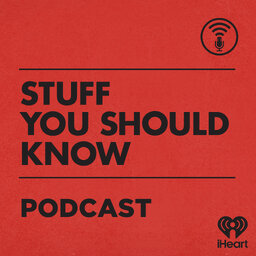SYSK Selects: How Mirrors Work
Whether using polished metal surfaces or clear glass, human beings have enjoyed admiring their reflections for centuries. In this episode, Josh and Chuck reflect on the types, mind-melting physics, superstitions and rather interesting history of mirrors.
Learn more about your ad-choices at https://www.iheartpodcastnetwork.com
 Stuff You Should Know
Stuff You Should Know


